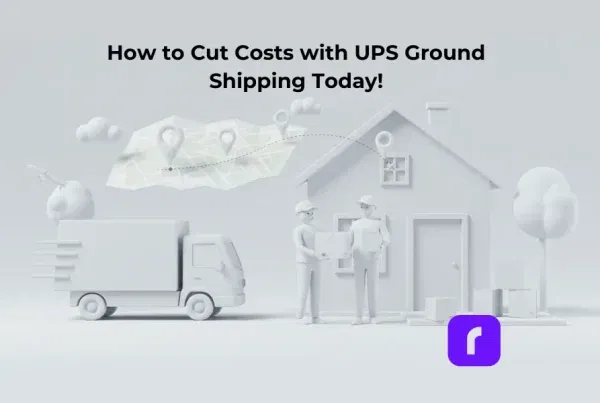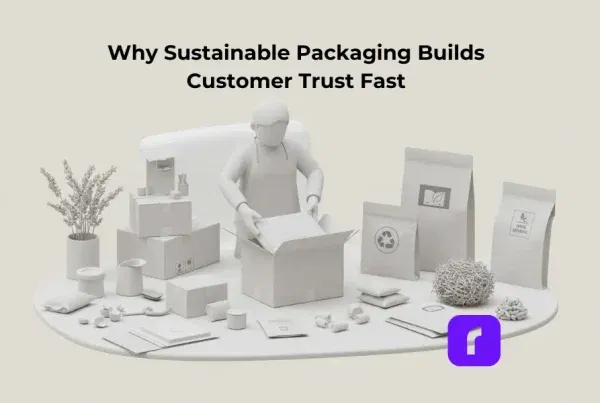Efficient and value-conscious shipping for small business is imperative for any enterprise to flourish, particularly those with an online retail or e-commerce footprint. Opting for the accurate carrier, service category, and shipping blueprint can carry a sizable bearing on your expenditures, customer journey, and comprehensive workings.

This article probes hands-on tactics to rationalize shipping for small businesses. We’ll review prevalent carrier alternatives like USPS and FedEx spotlight the upsides of elucidations like Rollo Ship, and issue actionable guidance to economize on overheads. Whether you’re just inaugurating or aspiring to refine active processes, peruse on to pinpoint the exemplary shipping configuration for your establishment.
Exploring Cost-Effective Shipping Solutions
For most small enterprise proprietors, shipping charges are a necessary evil – a disbursement to be supervised rather than dismissed. The good thing is that with some examination and plotting, you can spot surprisingly reasonable behaviors to ship parcels.
Finding the Cheapest Shipping for Small Business
The initial stride is analyzing percentages across discrete carriers like USPS, FedEx, and UPS. Delivery intervals, magnitude and heaviness capacities, and specialty amenities also impinge on costs. Appraising all these variables sanctions you to determine the most economical techniques for your archetypal package account.
It’s also beneficial to survey USPS flat percentage boxes and envelopes, which tender fixed pricing irrespective of destination. These can produce major rebates compared to regular priority mail for bulky or sizable particulars. Just be assured to counterpoise baseline costs with good customer assistance.
Impact of Dimensional Weight on Shipping Expenses
Dimensional (or volumetric) heaviness depicts a principal role in shipping carrier pricing. Essentially, it refers to the quantity of leeway a package preoccupies in narration to its actual heaviness. Carriers exercise dimensional heaviness, computed via length x width x height, to explain for necessitated capacity in their vehicles and infrastructure.
For small and light products like clothing, understanding dimensional weight is key to avoiding inflated shipping costs. You can optimize packaging to size items as compactly as possible without compromising protection. It’s also worthwhile checking if carriers apply dimensional weight differently – for example, FedEx uses a 166 cubic inch per pound standard.
Choosing the Appropriate Delivery Service for Your Company
With an array of options from USPS, FedEx, UPS, and more, how do you pick the best shipping carrier for your small business? Consider these important factors when evaluating different suppliers:
USPS and FedEx – Which to Choose?
Choosing the right carrier for your small business depends on various factors, including cost, delivery speed, and package size. USPS offers cost-effective standard pricing, making it a great choice for budget-conscious businesses. Additionally, through Rollo Ship, small businesses can access superior USPS discounts, significantly reducing shipping costs even further.
FedEx and UPS, on the other hand, are preferable for urgent or time-sensitive deliveries due to their faster shipping speeds. They are ideal for premium or gift-oriented items where presentation and timely delivery are crucial.
When selecting a carrier, small businesses should consider the average order value and their customers’ willingness to pay for faster shipping. For those prioritizing cost savings, the discounted rates offered by USPS through Rollo Ship are an attractive option, while FedEx’s reliable 2-day service may be more suitable for higher-end deliveries.
The Advantages of Rollo Ship for eCommerce Integration
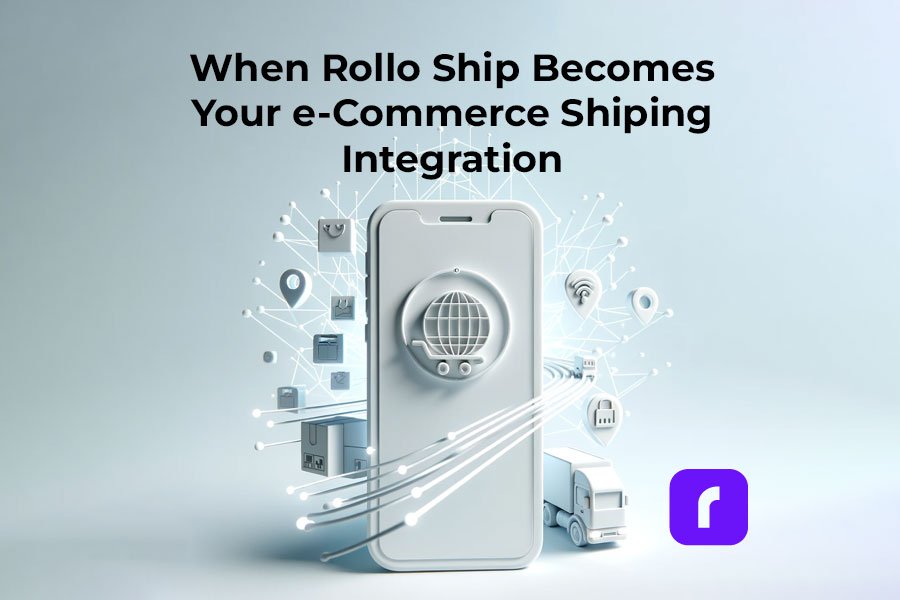
While USPS, FedEx, and others cover the basics, purpose-built solutions like Rollo Ship optimize the entire shipping process for e-commerce businesses. With its API-based integration, Rollo automatically syncs orders from all major platforms like Shopify, WooCommerce, and Amazon. Integrating shipping processes with e-commerce platforms, especially for Amazon sellers, is vital for efficiency. The use of specialized Amazon address labels can significantly streamline order processing and enhance overall shipping for small businesses.
This means no manual order entry and near-instant rate comparison across multiple carriers when generating labels. Rollo also intelligently determines the fastest, cheapest option per customer location. For high order volumes, bulk printing, tracking, and status updates are handled seamlessly. Ultimately, this saves hours of administrative workload while lowering shipping costs by up to 90% over popular platforms.
Managing Shipping Volume and Tracking
Order fulfillment works smoothly when you have a few daily shipments. But for small businesses that grow or scale, dealing with a pileup of 50, 100, or even 500+ packages becomes a real challenge. Maintaining organization and tracking while keeping costs down requires some clever strategies.
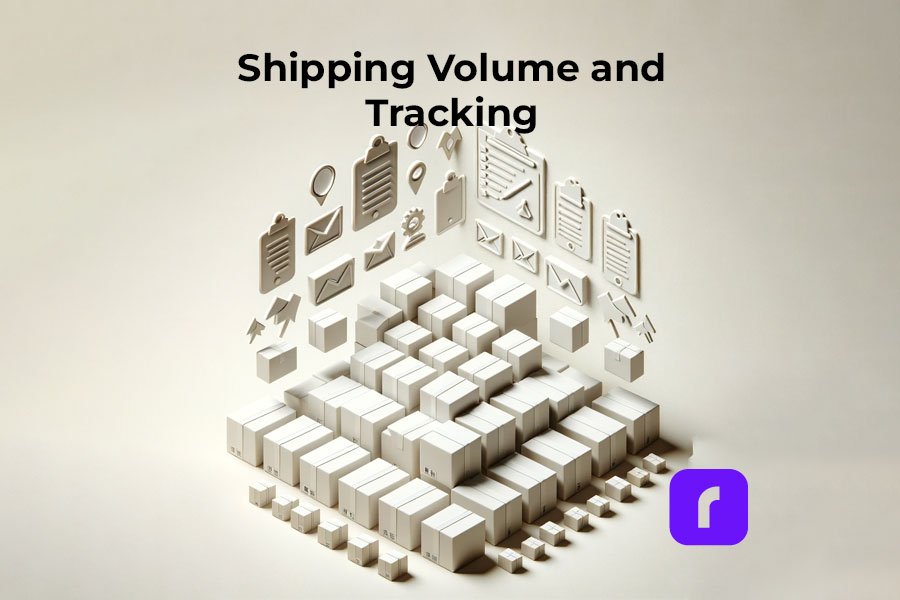
Handling High Shipping Volumes Efficiently
Firstly, don’t be afraid to leverage multiple carriers and services. Route faster orders via FedEx or UPS and default to USPS for standard deliveries. Oversized or heavy shipments may benefit from freight carriers. This balancing act keeps volume flowing through your most efficient channels.
When hit with unexpected spikes from promotions, batch process shipping in chunks rather than all at once. While not the fastest approach, staging orders prevent getting overwhelmed.
If averaging 50+ daily shipments, consider commercial rates and bulk mailing with USPS. Significantly discounted from public prices, this can yield over 50% savings. Just be sure to comply with strict packaging and documentation regulations.
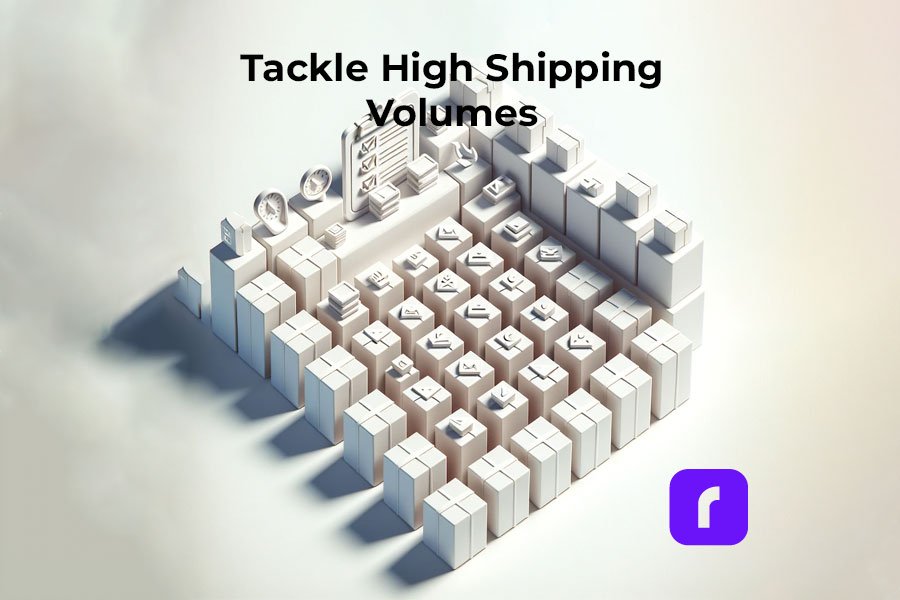
Efficient Label Printing: A key aspect of managing high shipping volumes is efficient label printing. For small businesses focused on shipping, having the right equipment for quick and accurate label creation is crucial. Rollo’s free label design app complements this need perfectly, offering an easy and efficient way to design and print labels.
This tool, along with a high-quality product label printer, can significantly streamline your shipping process. Learn more about the benefits of a product label printer for small businesses and how Rollo’s solutions, including the label design app, enhance your shipping efficiency.
The Importance of Tracking Information
With so many packages moving through the system, tracking provides visibility and confirmation of order status. For the consumer, this diminishes the worry about delivery, enhancing satisfaction and increasing the probability of repeat purchases.
From an operational perspective, tracking data helps identify any problem shipments. You can then quickly respond to delivery delays, Losses, or damage claims. Tracking analytics also gives insight to make data-driven decisions on preferred carriers, zones, or service types to minimize issues.
Essentially, effective tracking lays the groundwork for reliable shipping – a must-have for any scaled e-commerce merchant.
Addressing Common Challenges in Shipping for Small Business
Despite best efforts, shipping for small businesses invariably faces many hiccups, from grumpy customers to inexplicable price hikes. Preparing contingency plans for these common issues ensures optimal customer experience without blowing budgets.
Why is Shipping Expensive and How to Mitigate Costs?
Over the past two years, rising fuel costs, inflation, and labor shortages have led carriers to impose rate increase after increase. Simultaneously, customer appetite for fast, free shipping options strains margins for smaller merchants.
While steep carrier hikes are generally unavoidable, some methods to ease the burden include:
- 💰📦 – Charge actual shipping rates at checkout rather than absorbing costs
- 🛒🔒 – Establish a minimum order value to qualify for complimentary shipping
- 🚚⏱️💲 – Offer tiered delivery options based on urgency and willingness to pay
- 🎟️🎉 – Integrate discount coupons to offset shipping fees over holiday peaks
The goal is to balance customer expectations with sustainable business practices when it comes to order fulfillment costs. The more volume you drive, the greater leverage with negotiating carrier rates over time.
Accessing Shipping Discounts and Free Supplies
Beyond rate shopping between various carriers, some investigative work can uncover extra perks like:
- 📦💼 – USPS Commercial Base/Plus Pricing for bulk discounts by volume
- 🏢💸 – Small business discounts of up to 30% with FedEx
- 📦🎈 – Up to 40% off UPS shipments through UPS Savings Program
- 📦🆓 – Free U-Haul and FedEx boxes for USPS parcels
Having the right equipment also prevents needlessly purchasing packaging. Network with other local businesses to exchange reused boxers and bubble mailers. Also, order USPS Priority Mail supplies for free on the USPS website for use with priority mail shipments.
While not game-changing, every bit of savings counts when managing slim margins.

Evaluating Shipping Platforms and Tools
From buying postage to printing labels and tracking shipments, the shipping workflow involves multiple tools. Streamlining processes requires identifying how to best use available solutions.
Choosing the Best Shipping Platform
The best shipping companies for small businesses centralize and automate key tasks like purchase label printing and tracking while integrating across e-commerce channels and carrier APIs. Essential features include:
- 🔄🏷️ – Multi-carrier rate comparison and label generation
- 🖨️📈 – Capability for mass printing
- 🔗🛒 – Synchronization of orders with leading e-commerce systems
- ⚙️📋 – Customizable business rules and workflows
- 💸🚚 – Discounted shipping rates
- 🤖📬 – Automated tracking and status updates
Top solutions like Rollo Ship satisfy these criteria while appealing to various business sizes and technical needs. Rollo Ship balances robust features with ease of use while offering the deepest carrier discounts.
Optimizing Shipping For Your Small Business Success
By now the importance of optimizing shipping for cost-effectiveness and operational efficiency is clear. While the carrier options, discount programs, and tools covered here provide a strong foundation, managing shipping for small business requires ongoing diligence. As your business grows, reevaluate rates, features, and usage to ensure you operate efficient volumes without overflowing capacity.
Implementing the following best practices helps streamline processes:
- 🔄💼 – Quarterly carrier rate comparisons and contract negotiations
- 🖨️📦 – Batch print labels/forms with Rollo for high-volume efficiency
- 📲🔄 – Automate order status updates across channels with tracking data
- 🚀💲 – Provide fast, affordable shipping options but set customer expectations accurately
- 🏪📦 – Offer order pick-up from a local storefront to reduce fulfillment costs
Most importantly, adopt a solution like Rollo Ship to automate the heavy lifting. Key highlights include:
- 🔄📊 – Auto-updating order status based on carrier tracking to limit manual administration
- 💸📦 – Volume-tier discounts up to 40% off USPS Commercial Plus Pricing
- 🖨️🚀 – Bulk printing capability for 100+ orders
- 🔍📈 – Instant rate comparisons across FedEx, UPS, USPS
- 🔗💻 – Frictionless integration with e-commerce platforms, ERPs, software
For lean e-commerce businesses focused on rapid growth, Rollo presents an enterprise-grade shipping solution without the typical price tag. The savings alone over other carriers typically offset the reasonable SaaS fees within a few months.
Spend less time fretting over shipping logistics and more energy growing your small business with the right solution in place.
Follow Rollo on:
Frequently Asked Questions About Shipping for Small Business:
📌 Q: What Are the Best Shipping Options for Small Businesses?
💭 A: The best options include utilizing cost-effective carriers and leveraging technology like wireless label printers for efficiency. Businesses should also consider their specific needs, such as delivery speed and package size, to choose the most suitable option.
📌 Q: How Can Small Businesses Reduce Shipping Costs?
💭 A: Reducing costs can be achieved by optimizing package dimensions, comparing carrier rates, and using efficient tools like Rollo’s wireless label printer to streamline the shipping process, thereby saving time and resources.
📌 Q: What Is the Importance of Tracking Shipping for Small Businesses?
💭 A: Tracking is essential as it provides transparency and builds customer trust. It also helps businesses manage their shipments more effectively and respond promptly to any transit issues, enhancing overall customer satisfaction.
📌 Q: How Do Small Businesses Choose the Right Shipping Carrier?
💭 A: The choice depends on factors like cost, delivery speed, and reliability. Small businesses should evaluate their shipping volume and customer needs to find a balance that works best for their operations.
📌 Q: How Can Integrating E-commerce Platforms Improve Shipping for Small Businesses?
💭 A: Integration streamlines the shipping process, from order receipt to label printing and dispatch. It ensures accuracy, saves time, and can be efficiently managed with solutions like Rollo’s label printer and shipping platform.
